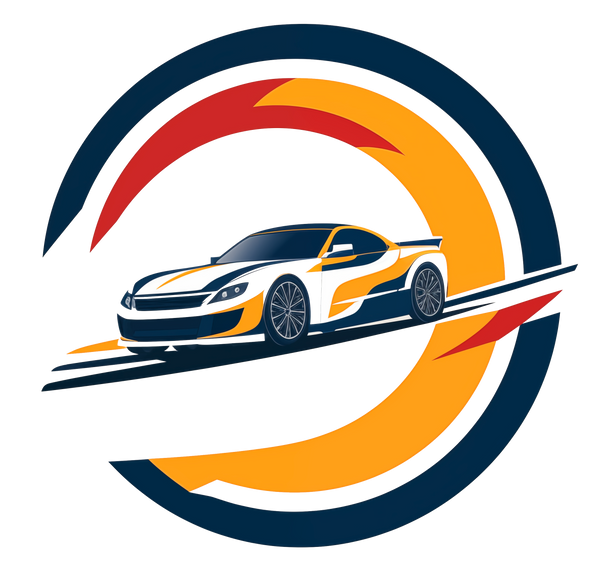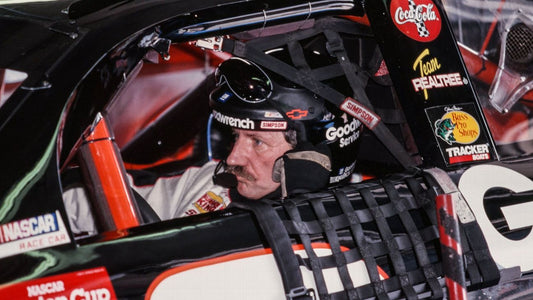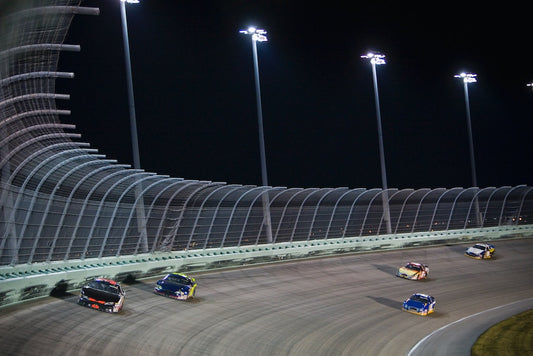The Tale of NASCAR's Car of Tomorrow

NASCAR has captured the hearts of millions of fans worldwide with its high-speed adrenaline-fueled races. The sport's popularity can be attributed to its constant innovation and commitment to providing thrilling entertainment. Throughout its history, NASCAR has witnessed significant milestones that have revolutionized the sport. One such milestone is the introduction of the Car of Tomorrow (CoT), a game-changing race car design that has had a profound impact on NASCAR racing.
Evolution of the CoT
The conception and development of the Car of Tomorrow marked a significant shift in NASCAR's approach to race car design. The CoT was developed with a focus on three key aspects: safety, competition, and cost-efficiency. NASCAR recognized the need to prioritize the safety of drivers and fans after several tragic accidents on the track. The CoT's design incorporated numerous safety features that aimed to protect drivers in the event of a crash.
In addition to safety, the CoT also aimed to level the playing field for teams by reducing the advantage that certain teams had due to superior equipment. By implementing standardized components, NASCAR aimed to create a more competitive environment where teams would rely more on driver skill and strategy rather than the size of their budget.
The development of the CoT involved rigorous testing and technological advancements. NASCAR worked closely with teams and manufacturers to ensure that the new race car would meet the highest safety standards and perform at its best on the track. The CoT underwent extensive wind tunnel testing to optimize its aerodynamics and improve its overall performance compared to previous models.
Challenges
The introduction of the Car of Tomorrow was not without its challenges. Traditionalist fans and drivers were resistant to the changes brought about by the CoT. They argued that the new design deviated too much from the sport's roots and that it would take away the essence of NASCAR racing. However, NASCAR stood firm in its commitment to improving safety and creating a fairer competition.
Implementing the CoT was a complex process that required significant adjustments from teams and drivers. The standardized components meant that teams had to adapt to a new way of building and maintaining their race cars. Drivers also had to adjust their driving style to accommodate the changes in the CoT's performance characteristics. It was a learning curve for everyone involved, but ultimately, it led to a more level playing field and exciting races.
Impact of the CoT on NASCAR
The Car of Tomorrow brought about several positive changes to NASCAR. One of the most significant impacts was the enhanced safety standards. The CoT's reinforced chassis and driver restraint systems provided drivers with better protection during accidents. This led to a decrease in the number and severity of injuries on the track, ensuring that drivers could continue to compete in the sport they loved.
The standardized components of the CoT also leveled the playing field for teams. Previously, teams with larger budgets had an advantage due to their ability to invest in advanced technology and equipment. With the CoT, teams were on a more equal footing, forcing them to rely more on strategy and driver skill to gain a competitive edge. This shift in dynamics created more exciting and unpredictable races, captivating fans even more.
The Car of Tomorrow also had a positive impact on the fan experience. With the new design, fans could easily identify and differentiate between cars on the track. This made it easier to follow the action and root for their favorite drivers. Additionally, the increased safety measures gave fans peace of mind, knowing that their favorite drivers were better protected.
However, the introduction of the CoT was not without its criticism. Some drivers and fans felt that the new design had a negative impact on the speed and performance of the race cars. They argued that the CoT was slower and less agile compared to previous models, which affected the overall excitement of the races. NASCAR took note of these concerns and made adjustments to improve the CoT's performance in subsequent years.
Interesting things about the CoT
The Car of Tomorrow had several unique design features that set it apart from previous NASCAR race cars. Its aerodynamics were optimized to improve stability and reduce drag. The CoT had a distinctive boxy shape, which allowed for better control and reduced the risk of the car flipping over during a crash.
One of the most important aspects of the CoT was its safety features. The reinforced chassis and driver restraint systems provided an unprecedented level of protection for drivers. The CoT also featured energy-absorbing materials that helped dissipate the impact of a crash, further reducing the risk of injury.
In terms of performance, the CoT's standardized components led to increased parity among teams. This meant that success on the track relied more on driver skill and strategic decision-making rather than the size of a team's budget. It created an environment where underdog teams had a chance to compete against the bigger, more established teams.
Related topics to explore
The history and evolution of NASCAR race cars is a fascinating subject to explore. From the early days of bootlegging and modified stock cars to the high-tech machines of today, NASCAR race cars have come a long way. Understanding the evolution of NASCAR race cars provides valuable context for appreciating the significance of the Car of Tomorrow.
Safety improvements in NASCAR have been an ongoing focus for the sport. From the early days of minimal safety measures to the introduction of the CoT, NASCAR has continuously worked to protect its drivers. Exploring the advancements in safety technology and the impact they have had on the sport can provide valuable insights into the commitment of NASCAR to its participants' well-being.
Key features of the Car of Tomorrow are worth diving into. Understanding the design choices and technological advancements that went into the CoT can provide a deeper appreciation for its significance in NASCAR history. From its unique shape to its safety features, each aspect of the CoT was carefully considered to improve the sport.
The role of technology in NASCAR is a topic that is intricately tied to the development of the Car of Tomorrow. NASCAR has always been at the forefront of embracing technology to enhance the sport. Exploring the use of technology in areas such as car design, data analytics, and broadcasting can shed light on the innovative spirit of NASCAR.
Organization spotlight: Ford
One company that has played a significant role in NASCAR is Ford. Ford has been involved in NASCAR for several years, providing support and expertise to teams and drivers. Their partnership with NASCAR has had a positive impact on the sport, contributing to its growth and development.
Ford's involvement in NASCAR can be seen through their sponsorship of teams and drivers. They have been a key partner for many successful teams, providing financial support and technical expertise. Ford's commitment to the sport has helped teams achieve success on the track and further elevate the level of competition in NASCAR.
The partnership between Ford and NASCAR has had a far-reaching impact on the sport. Through their collaboration, they have been able to implement important initiatives such as the development of the Car of Tomorrow. Ford's expertise in engineering and technology has been instrumental in refining the design and performance of the CoT, making it a safer and more competitive race car.
Conclusion
The Car of Tomorrow stands as a significant milestone in the history of NASCAR. Its introduction marked a shift in the sport's approach to race car design, prioritizing safety, competition, and cost-efficiency. Despite facing resistance from traditionalist fans and drivers, the CoT proved to be a game-changer for NASCAR.
The impact of the Car of Tomorrow on NASCAR has been substantial. Enhanced safety standards, a level playing field for teams, and an improved fan experience have all contributed to the sport's continued success. While there have been both successes and criticisms from fans and drivers, the CoT remains a crucial part of NASCAR's legacy.
Looking ahead, NASCAR continues to evolve and embrace new advancements. Future developments and advancements in the sport are inevitable, and NASCAR will continue to prioritize safety, competition, and innovation. The Car of Tomorrow will forever be remembered as a turning point in NASCAR's journey, revolutionizing racing and leaving a lasting impact on the sport.





